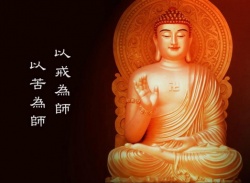Buddidstic theory of personality
Eastern religions have a rich content of psychology at their core. Recent researches in this field have been yielding significant results. In Psychology, the study of personality occupies the central position. This small paper is a peep into the heart of Buddhistic theory of personality.
The concept ‘Atta’ in Buddhistic literature, corresponds to the concept of personality in modern Psychology. Atta, the self, refers to the psychological functionings i.e., thinking, reasoning, memory, decision, perception, learning etc., In Abhidamma, a pioneer text-book of Buddhism it was concluded that an individual’s mental states are in constant flux from moment to moment. In order to understand personality, like modern Psychologists they defined unhealthy and healthy factors.
Unhealthy factors are listed as delusion, perplexity, shamelessness, remorselessness, egoism, agitation, worry, greediness, envy etc., The healthy factors are insight, modesty, discretion, rectitude confidence etc., of course, every factor in the unhealthy group has its opposite in the healthy group.
Mental health is caused by the healthy factors while, mental ill-health is the result of unhealthy factors. A normal personality is nothing but a composite of both healthy and unhealthy factors.
The Buddhist goes ahead and advises people to attain the Arhat personality. An Arhat personality is higher than the integrated personality. They define Arhat as one who has all healthy factors in him and who has not even a single unhealthy factor. Arhat is stitaprajna of vedic philosophy. He may be compared to some extent to Maslow’s fully self-actualised person. ‘Arhat’ is nothing but a penultimate stage of nirvana.
Then, to the question how to attain the balanced or arhat personality, they say Meditation, is the way. Meditation is the right royal road to nirvana. Abhidamma categorised meditation as concentration and mindfulness.
When an individual concentrates on a particular object, in due course, he merges with that object. It results in bliss, rapture, and disappearance of all other cognitions from the mind. But the aim of mindful meditation is to get the full awareness of any and all contents of the mind. Finally after a thorough practice this leads to nirvana.
